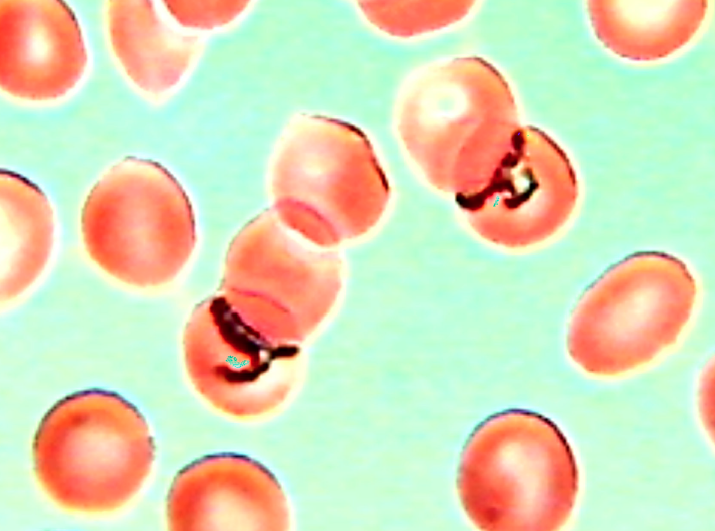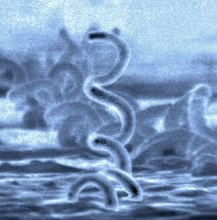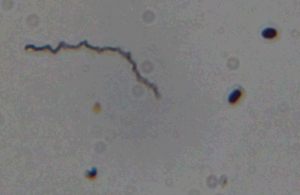Eikeland is the head The Norwegian National Advisory Unit on Tick-borne Diseases in Kristiansand, Norway.
In the interview, Eikeland talks about Borreliosis and whether it can turn chronic. She does not believe that patients that get Lyme disease and not get well can have a persisting infection. In the interview she claims that there is not enough evidence showing that this is the case in vivo. She also goes on to tell about patients that believe they are ill with Lyme disease, but maybe they have something completely different. She does not advocate long term antibiotics.
She explains that certain Lyme literate doctors and patients live in a different world from the one Eikeland and her colleagues live in. She however claims that it’s a good thing to meet at conferences like NorVect to discuss even though one is of different opinions.
Prof Ying Zhang from John Hopkins Bloomberg School of Public Health explains why Lyme disease is so difficult to treat. Having worked with Tuberculosis (TB) for many years, he sees the similarities and differences between these to bacteria. With Tuberculosis it is known that you have to treat with certain drug combinations that kill the growing form and the non-growing form (persisters) and if you treat shorter than 6 months, the patient will get a relapse.
The bacterium that causes Lyme disease is much more advanced than the TB bacterium, and the main reason is that it also takes a persisting form. These persister forms of the Borrelia bacteria cannot be cultured.
The two views – ILADS and IDSA are two different ways of seeing the same disease. Prof. Zhang thinks they are both right. When it comes to acute Lyme disease, IDSA is right. Then you only need shorter courses of treatment. When the disease turns chronic, longer courses of treatment with the right drug combinations are needed (ILADS view).
Dr. Phillips talks about what is the best treatment for Lyme disease. Sometimes it is enough to use shorter courses of antibiotics, other times longer courses are required.
He also talks about the CDC study that shows that the majority of US doctors treat Lyme disease with more than 4 weeks of antibiotics, and do not follow the IDSA standard.
Dr. Stricker talks about Lyme disease, a growing epidemic world-wide, and the controversies surrounding this disease. Amongst others, he compares Lyme to the HIV epidemic. The interview took place at the NorVect Conference 2015.
Doctors and researchers from all over the world were gathered in Oslo, Norway May 30th-31st 2015 to share the latest knowledge on vector-borne diseases.
All together 24 lectures and 4 panel discussions were filmed which amount to around 16 hours of viewing time. The topic was ”Connecting the Dots on Vector-borne Diseases”.
You now have the opportunity to watch the whole NorVect conference at home at your own convenience.
Click here to register.
Price: NOK 499
All lectures:
Raphael B. Stricker, MD
Lyme disease history and evolution of tick-borne disease
Daniel Cameron, MD, MPH
Essentials for Lyme disease diagnostics and evidence based treatment
Steven Phillips, MD
Exploring the Evidence for Chronic Infection in Lyme
Armin Schwarzbach, Ph.D, MD
Tick-borne coinfections – A European overview
Garth L. Nicolson Ph.D
Chronic Bacterial and Viral Infections in Neurodegenerative and Neurobehavioral Diseases and other Chronic Illnesses
Volkhard Kempf, Ph.D, MD
Bartonella: “Sticky lollipops” & Angiogenesis
Gad Baneth, DVM, Ph.D, Dipl. ECVCP
Babesiosis – A Group of Tick-Borne Protozoal Diseases with Zoonotic Importance
Gad Baneth, DVM, Ph.D, Dipl. ECVCP
Ehrlichiosis – Tick-Borne Bacterial Diseases of humans and animals
Steven E. Phillips, MD
Exploring the Evidence for Chronic Infection in Brucellosis
Gad Baneth, DVM, Ph.D, Dipl. ECVCP
Dirofilariases- Emerging Filarial infections in Europe
Ritchie C. Shoemaker, MD
Correlation of volumetric brain imaging with Western blot testing for Lyme disease
Randi Eikeland, Ph.D, MD and Harald Reiso, Ph.D, MD
The Norwegian National Advisory Unit on Tick-borne Diseases (NKFS)
Robert Mozayeni, MD
Bartonella: Clinical Expression of Small Vessel Disease, Treatment Experience and Overlap with Lyme Disease
Brian A. Fallon, MD, MPH, MED
Neuropsychiatric Lyme disease – madness or reality?
Armin Alaedini, Ph.D
Immunologic Mechanisms in the Persistence of Symptoms in Lyme Disease
Ying Zhang, Ph.D, MD
Borrelia Persister Drugs: Implications for Improved Treatment
Brian A. Fallon, MD, MPH, MED
When Lyme symptoms persist – biological and treatment results from the U.S. Clinical Trial of Lyme Encephalopathy
Raphael B. Stricker, MD
Sexual transmission of Lyme Disease
Neil Nathan, MD
Rebooting – A New Paradigm for Complex Medical Issues in Chronically ill patients
Garth L. Nicolson Ph.D
Loss of Mitochondrial Function in Chronic Illnesses and Infectious Diseases and its Treatment with Lipid Replacement Therapy
Neil Nathan, MD
The Importance of Evaluating Mold Toxicity and Methylation for Chronic Lyme Patients
Peter Andras Csango, MD
Molecular detection of tick-borne bacteria in ticks in southern Norway
Carl Morten Motzfeld Laane, Ph.D
Silent Babesia Infections in Norway
Ravilya Yegemberdiyeva, Ph.D
Spectrum Of Tick-Borne Diseases Pathogens In Kazakhstan
Questions and Panel discussion sessions
Oslo kvinne tok opp 300.000 kroner i lån for å avslutte Borrelia-mareritt!
“Etter ti år med borreliose og sviktende behandling i Norge, så 23-åringen fra Oslo mørkt på fremtiden. Et lån og en tur til utlandet var nøkkelen til at hun i fjor fikk livet tilbake.” Les hennes historie her
Woman from Norway had to loan 300 000 NOK (38 000 $) in order to get treatment for Lyme disease. She is now finally healthy thanks to international doctors. Read also the interview with Dr. Richard Horowitz in the article.
A short-term Borrelia burgdorferi infection model identifies tissue tropisms and bloodstream survival conferred by adhesion proteins.
Borrelia burgdorferi, the causative agent of Lyme disease in the United States, is able to persist in the joint, heart, skin, and central nervous system for the lifetime of its mammalian host. Borrelia species achieve dissemination to distal sites in part by entry into and travel within the bloodstream.
Read the full study here
Researchers have found ticks that carry the parasite Babesia in Sweden, as well as detected antibodies in some people. This malaria-like parasite can cause severe illness in humans. Another study has already showed that 7% of Danish ticks carry Babesia.
Read more here (in Swedish)
Babesia – også kalt Nordens Malaria påvist i flått i Sverige!
I Svergie er det funnet Babesia i flått og antistoffer mot denne blodparasitten i et utvalg personer. Babesia – også kalt Nordens Malaria – kan gi alvorlig sykdom hos mennesker, da parasitten bryter ned de røde blodlegemene. Dette kommer kanskje ikke som noe overraskelse på enkelte, ettersom en studie fra Danmark allerede har vist 7% forekomst av Babesia i danske flått.
Mange pasienter som NorVect er i kontakt med har fått påvist Babesiasmitte, selv om Folkehelseinstituttet fastholder at det kun et ett menneskelig tilfelle av Babesiose i Norge fra 2007.
The bacteria that cause syphilis and Lyme Disease have something extraordinary in common: they manage to propel themselves through their environment in spite of the fact their tails are located inside their bodies.
The remarkable engineering of these bacteria are probably a major reason spirochetes have been such successful pathogens in humans and other animals. Syphilis and Lyme Disease are better at penetrating our bodies than almost any other organisms. Spirochetes cross barriers that are impenetrable to almost anything else, including basement membranes and the linings of organs like intestines called endothelium that function to keep the kajillions of bacteria in your gut out of the rest of your body. In humans, syphilis and Lyme Disease bacteria easily penetrate the normally sacrosanct blood-brain barrier to infect the central nervous system. Syphilis can invade the placenta and infect an unborn child.
Read the whole blog entry here.
A new study published in Antimicrobial Agents and Chemotheraphy shows that Borrelia burgdorferi bacteria form drug-resistant persister cells that are not easily killed by antibiotics.
Link to article here
En ny studie viser at borrelia bakterien ikke blir drept av standard antibiotikabehandling som gis her i Norge. Bakteriene kapsler seg inn for å beskytte seg mot immunsystemet og antimikrobiell behandling. Dette kan være en årsak til at mange får tilbakefall etter behandlingsstopp.
Link til engelsk artikkel her




